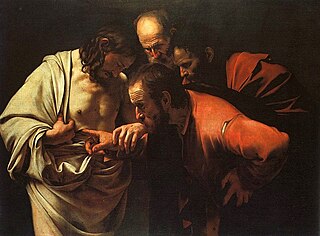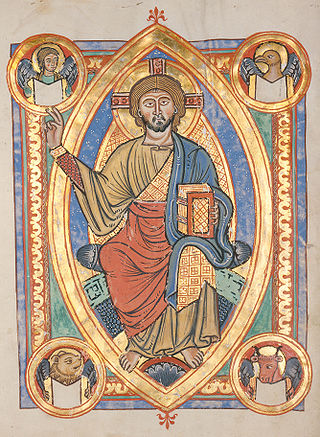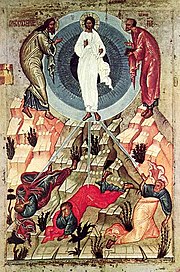
Philippe Pétain was a French general who attained the position of Marshal of France at the end of World War I. For the conflagration, Marshal Pétain became known as "the Lion of Verdun". Born Henri Philippe Benoni Omer Pétain, he served as head of the collaborationist regime of Vichy France, from 1940 to 1944, during World War II. Pétain, who was 84 years old when he became Prime Minister, remains the oldest person to become the head of state of France.

The Most Sacred Heart of Jesus is one of the most widely practised and well-known Catholic devotions, wherein the heart of Jesus Christ is viewed as a symbol of "God's boundless and passionate love for mankind". This devotion to Christ is predominantly used in the Catholic Church, followed by high-church Anglicans, Lutherans and some Western Rite Orthodox. In the Latin Church, the liturgical Solemnity of the Most Sacred Heart of Jesus is celebrated the third Friday after Pentecost. The 12 promises of the Most Sacred Heart of Jesus are also extremely popular.

Our Lady of Fátima is a Catholic title of Mary, mother of Jesus, based on the Marian apparitions reported in 1917 by three shepherd children at the Cova da Iria in Fátima, Portugal. The three children were Lúcia dos Santos and her cousins Francisco and Jacinta Marto. José Alves Correia da Silva, Bishop of Leiria, declared the events worthy of belief on 13 October 1930.

Ferdinand Foch was a French general and military theorist who served as the Supreme Allied Commander during the First World War. An aggressive, even reckless commander at the First Marne, Flanders and Artois campaigns of 1914–1916, Foch became the Allied Commander-in-Chief in late March 1918 in the face of the all-out German spring offensive, which pushed the Allies back using fresh soldiers and new tactics that trenches could not withstand. He successfully coordinated the French, British and American efforts into a coherent whole, deftly handling his strategic reserves. He stopped the German offensive and launched a war-winning counterattack. In November 1918, Marshal Foch accepted the German cessation of hostilities and was present at the Armistice of 11 November 1918.

According to Christian tradition, the Image of Edessa was a holy relic consisting of a square or rectangle of cloth upon which a miraculous image of the face of Jesus had been imprinted—the first icon ("image"). The image is also known as the Mandylion, in Eastern Orthodoxy, it is also known as Acheiropoeiton, or "icon not made by hand".

Robert Georges Nivelle was a French artillery general officer who served in the Boxer Rebellion and the First World War. In May 1916, he succeeded Philippe Pétain as commander of the French Second Army in the Battle of Verdun, leading counter-offensives that rolled back the German forces in late 1916. During these actions he and General Charles Mangin were accused of wasting French lives. He gives his name to the Nivelle Offensive.

Margaret Mary Alacoque, VHM, was a French Catholic Visitation nun and mystic who promoted devotion to the Sacred Heart of Jesus in its modern form.
The Brothers of the Sacred Heart is a Catholic lay religious congregation of Pontifical Right for Men founded by the Reverend Fr. André Coindre (1787–1826) in 1821. Its Constitution was modeled upon that of the Jesuits, while its Rule of Life was based upon the Rule of Saint Augustine. Its members bind themselves for life by simple vows of religion. Its members add the nominal S.C. after their names to indicate their membership in the congregation.

Since the Crucifixion of Jesus on Calvary, a number of people have claimed to have had visions of Jesus Christ and personal conversations with him. Some people make similar claims regarding his mother, Mary, who is often known as the Virgin Mary. Discussions about the authenticity of these visions have often invited controversy. The Catholic Church endorses a fraction of these claims, and various visionaries it accepts have achieved beatification, or even sainthood.

Lutgardis of Aywières is a saint from the medieval Low Countries. She was born in Tongeren, known as Tongres in French, and entered monastic life at the age of twelve. During her life various miracles were attributed to her, and she is known to have experienced religious ecstasy. Her feast day is June 16.

The Roman Catholic tradition includes a number of devotions to Jesus Christ. Like all Catholic devotions, these prayer forms are not part of the official public liturgy of the Church but are based on the popular spiritual practices of Roman Catholics. Many are officially approved by the Holy See as suitable for spiritual growth but not necessary for salvation.

Marie Eugène Debeney was a French Army general. He commanded a corps at the Battle of the Somme then, in the second half of 1917, served as chief of staff to the French Commander-in-Chief Philippe Pétain. He then commanded the First Army which, fighting alongside British Empire forces, played an important role in the mobile fighting of 1918, including at the Battle of Amiens and the Storming of the Hindenburg Line.

The Red Scapular of the Passion of Our Lord and the Sacred Hearts of Jesus and Mary is a Roman Catholic sacramental scapular associated with the Vincentians. It is often just called the Scapular of the Passion or simply the Red Scapular but it should not be confused with other similarly-termed scapulars described below.

The Scapular of the Sacred Heart is a Roman Catholic devotional scapular bearing an image of the Sacred Heart of Jesus on the front panel, and an image of the Virgin Mary as Mother of Mercy on the panel which hangs at the wearer's back. In its current form, the design and the formal church approval for its use are due to Estelle Faguette, a French domestic servant, who in 1876 claimed to have received a series of apparitions during which the Virgin Mary showed this scapular and spoke about its use.

Mary of the Divine Heart, born Maria Droste zu Vischering, was a German noblewoman and Roman Catholic religious sister of the Congregation of Our Lady of Charity of the Good Shepherd. She is best known for having influenced Pope Leo XIII to consecrate the world to the Sacred Heart of Jesus. Pope Leo XIII called the solemn consecration "the greatest act of my pontificate".

The Alliance of the Hearts of Jesus and Mary refers to the historical, theological and spiritual links in Catholic devotions to the Sacred Heart of Jesus and the Immaculate Heart of Mary.

The Villa Bethania was constructed in the French village of Rennes-le-Château between 1901 and 1905 as part of the former estate of the Abbé Bérenger Saunière, in the name of his maidservant Marie Dénarnaud.

The flag of the department of Vendée was created by French designer Michel Disle.

Army Group Centre was a grouping of French field armies during World War I, which was created on June 22, 1915. The army group covered the Western Front roughly between Rheims and Verdun.



















